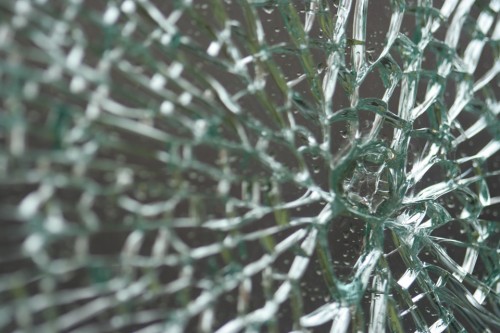Hey 3D fractures – WE OWN YOU
For the first time we’ve got a mathematical model leading to a new law of physics that “describes all the stages involved in the way materials crack, making it possible to predict how they will do so before the fracture actually occurs. This is the first time ever that this model has been used to describe objects or materials in 3D, namely all of those that occupy a volume in space and are isotropic, with a homogeneous structure” (Source: Science Daily). The model, developed by Antonio J. Pons, of the research group on Nonlinear Dynamics, Nonlinear Optics and Lasers of the Universitat Politècnica de Catalunya (UPC)-Barcelona Tech, describes how materials such as glass, polymers, concrete, ceramics, metals, and rocks will fracture.
Image credit www.chronicwanderer.wordpress.com
Broadly speaking, materials break in three different ways: from top to bottom; horizontally, as in a cut; or by tearing, such as when a cable is pulled and twisted at the same time (Hsu). Pons’ bad-ass simulation model can predict and describe crack patterns in structures as large as mountain ranges and as small as microscopic elements, replicating the “processes involved in the fracture of materials from their initial state, as the break develops, and its final outcome at all scales. In addition, the method allows for describing cracks mathematically in three dimensions. The method also enables us to perform numerical simulations that were impossible until now” (Science Daily). What has me so worked up about all of this is the possibility that our newfound understanding of how cracks form could allow us to better control them. The idea fills me with a giddy sense of power. Can you imagine what this means for control joints, glass specifications, structural calculations, design for seismic regions, etc?
WU XING:
I’m not applying WU XING here because we are dealing with the laws of physics. Conversely, I have filed this entry across all categories.
Cited:
Hsu, Jeremy. “For the First Time, Simulation Predicts Precisely How Materials Fracture.” Pop Sci 03/30/10. Accessed 03/30/10. URL.
Universitat Politècnica de Catalunya. “New Method for Predicting and Describing How Materials Break.” ScienceDaily 03/30/10. Accessed 03/30/10. URL.

















After the all the simulations are run, and it’s determined that the cracks have been accurately predicted, isn’t is still broken?
Leave a Wordpress Comment: